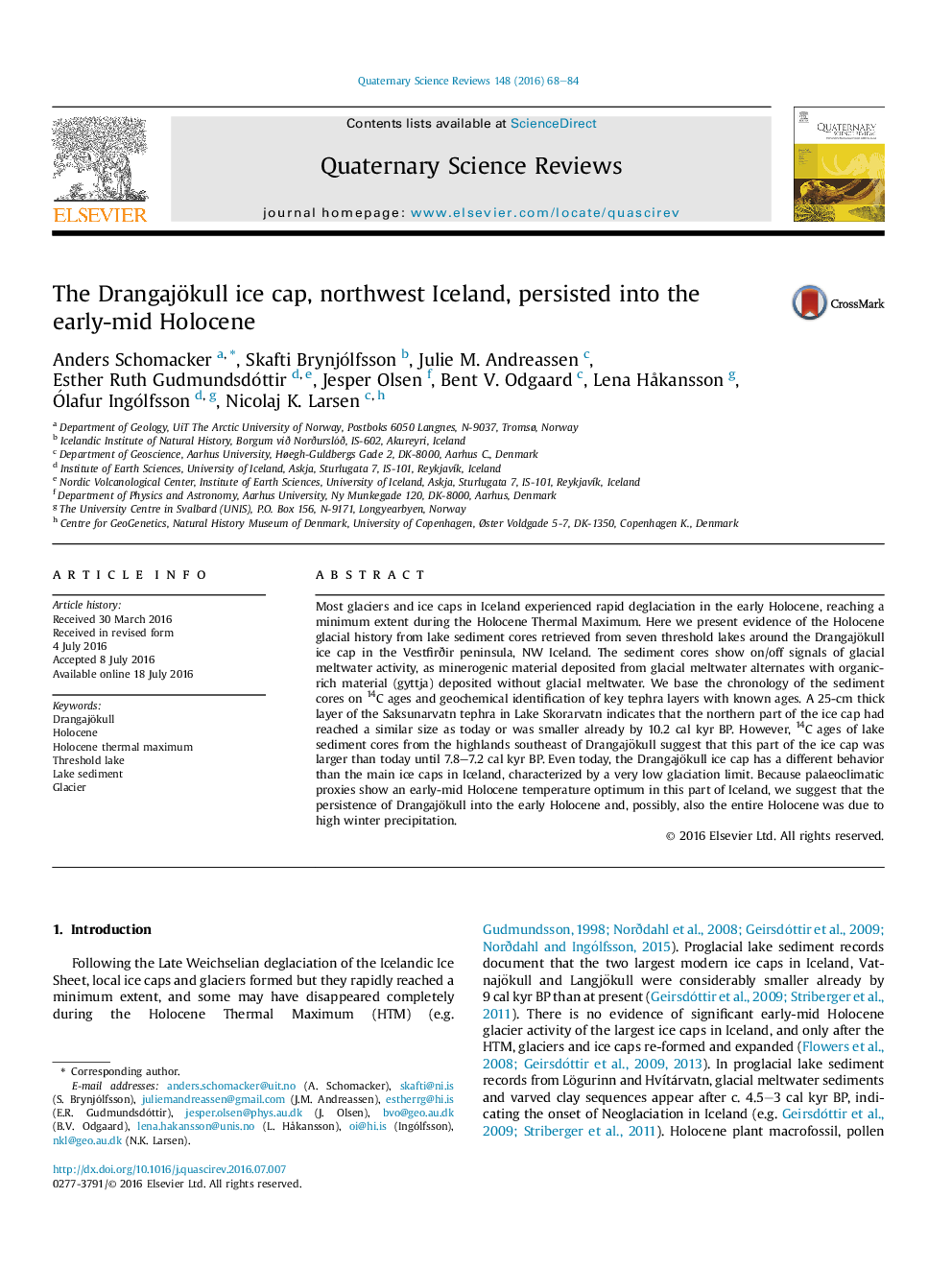| کد مقاله | کد نشریه | سال انتشار | مقاله انگلیسی | نسخه تمام متن |
|---|---|---|---|---|
| 6445371 | 1640787 | 2016 | 17 صفحه PDF | دانلود رایگان |
عنوان انگلیسی مقاله ISI
The Drangajökull ice cap, northwest Iceland, persisted into the early-mid Holocene
دانلود مقاله + سفارش ترجمه
دانلود مقاله ISI انگلیسی
رایگان برای ایرانیان
کلمات کلیدی
موضوعات مرتبط
مهندسی و علوم پایه
علوم زمین و سیارات
زمین شناسی
پیش نمایش صفحه اول مقاله

چکیده انگلیسی
Most glaciers and ice caps in Iceland experienced rapid deglaciation in the early Holocene, reaching a minimum extent during the Holocene Thermal Maximum. Here we present evidence of the Holocene glacial history from lake sediment cores retrieved from seven threshold lakes around the Drangajökull ice cap in the Vestfirðir peninsula, NW Iceland. The sediment cores show on/off signals of glacial meltwater activity, as minerogenic material deposited from glacial meltwater alternates with organic-rich material (gyttja) deposited without glacial meltwater. We base the chronology of the sediment cores on 14C ages and geochemical identification of key tephra layers with known ages. A 25-cm thick layer of the Saksunarvatn tephra in Lake Skorarvatn indicates that the northern part of the ice cap had reached a similar size as today or was smaller already by 10.2 cal kyr BP. However, 14C ages of lake sediment cores from the highlands southeast of Drangajökull suggest that this part of the ice cap was larger than today until 7.8-7.2 cal kyr BP. Even today, the Drangajökull ice cap has a different behavior than the main ice caps in Iceland, characterized by a very low glaciation limit. Because palaeoclimatic proxies show an early-mid Holocene temperature optimum in this part of Iceland, we suggest that the persistence of Drangajökull into the early Holocene and, possibly, also the entire Holocene was due to high winter precipitation.
ناشر
Database: Elsevier - ScienceDirect (ساینس دایرکت)
Journal: Quaternary Science Reviews - Volume 148, 15 September 2016, Pages 68-84
Journal: Quaternary Science Reviews - Volume 148, 15 September 2016, Pages 68-84
نویسندگان
Anders Schomacker, Skafti Brynjólfsson, Julie M. Andreassen, Esther Ruth Gudmundsdóttir, Jesper Olsen, Bent V. Odgaard, Lena HÃ¥kansson, Ãlafur Ingólfsson, Nicolaj K. Larsen,